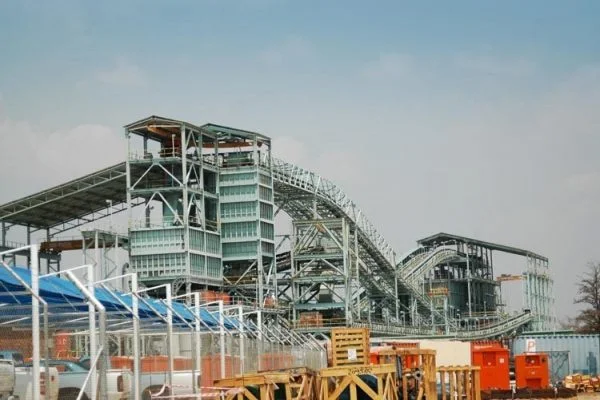Platinum group metals (PGM) producer, Zimplats’ capital expenditure dropped 9.3 percent to US$104 million in the year to June 2020, compared to the same period last year, according to a preliminary report released by the group on the Australia Stock Exchange where its shares are listed.
Zimbabwe’s largest PGMs miner said the expenditure on capital projects, which covered stay in business programmes, replacement mines and expansion projects, fell short of the US$115 million spent in 2019.
This came as the group sailed over the uncertainty caused by the outbreak of the coronavirus to post sterling financial performance largely on account of better metal prices.
Zimbabwe is the world’s second largest known PGMs deposits after South Africa and platinum, which is the second largest mineral export after gold, together they account for over half the mineral exports.
A total of US$69 million was spent on stay-in-business projects during the year, down from US$82.5 million invested the prior year. This included expenditure on the Bimha Mine redevelopment and the furnace rebuild and improvements project.
Zimplats said the Bimha Mine redevelopment was progressing according to the plan. The south underground crusher and ore-conveyance system were commissioned in December 2019.
The group aims to complete outstanding underground workshops in the north and south sections in December 2020, which will complete the full scope of the project.
“During the year, US$15 million was spent on this redevelopment project, bringing the total project expenditure to US$98.8 million as of 30 June 2020 compared to a total project budget of US$101 million,” Zimplats said.
The furnace rebuilds and improvements project, which commenced in 2019 were completed and commissioned in the first half of 2020.
A total of US$7.1 million was spent in 2020 bringing the total expenditure to US$20.4 million while US$16.4 million from US$18.6 million was spent on the replacement of trackless mining machinery including ancillary support equipment in the previous financial year, in line with the current replacement philosophy.
A total of US$33.6 million was spent on replacement mines during the year, 20 percent higher than the US$28.1 million spent in 2019.
Development of Mupani Mine, a replacement for Rukodzi and Ngwarati mines, which deplete in 2022 and 2024 respectively, is progressing well and on schedule.
A total of US$32.1 million was spent on this project during the year, taking the overall project cost to US$99.5 million as at 30 June 2020.
The Mupani Mine is scheduled to reach full production of 2.2 million tonnes per annum in July 2024 at an estimated cost of US$264 million.
Zimplats said the revised phase two expansion project was now substantially complete. An amount of US$1 million was spent on the Mupfuti Mine stockpile cover during the year, bringing the project total expenditure to US$463 million against authorised budget of US$492 million.
Operationally, Zimplats said mining and milling operations performed very well during the year, producing 7.2 million tonnes (2019: 6.7 million tonnes) and 6.8 million tonnes (2019: 6.5 million tonnes) respectively.
The group’s 6E head grade at 3.48g per tonne, was the same as the previous year.
Ore mined and milled increased by seven and 5 percent, respectively from the previous year benefiting from ore from Mupani Mine and fleet productivity enhancement initiatives that began towards the end of 2019, which have now been rolled out to all the underground mines.
The concentrator plants throughput, Zimplats said, was better than the previous year due to higher running time and milling rate.
The group’s operations were not affected by the Covid-19 pandemic as all the mines and the processing plants continued operating throughout the year with no confirmed cases within the workforce.
Total 6E metal produced for the year (including metal sold as concentrate) increased marginally from 579 591 ounces in 2019 to 580 178 ounces in 2020.
Revenue increased by 38 percent to US$868.9 million from US$631 million in 2019 mainly due to the increase in average prices of rhodium, palladium, gold and nickel.
The 6E ounces sold decreased by 3 percent from 573 009 ounces in 2019 to 554 944 ounces in 2020.
This was mainly due to the force majeure notice issued by parent firm Impala Platinum Limited, which resulted in the suspension of PGM sales for more than a month in the final quarter of the year.
“The force majeure notice was in response to the Covid-19 pandemic induced lockdown in South Africa,” Zimplats said.
Gross profit margin improved to 45 percent this year from 30 percent in 2019 mainly due to the improvement in metal prices.
Operating cash cost per 6E ounce increased by 2 percent from US$602 in 2019 to US$613 in 2020 mainly due to inflation.
Profit before income tax for the year increased to US$374.2 million from US$205.3 million in 2019. Income tax expense for the year increased to US$112.4 million from US$60.5 million in 2019 mainly driven by the increase in taxable profit.
Resultantly, profit after tax for the year increased to US$261.8 million from US$144.9 million in 2019. Net cash inflow from operating activities increased to US$258.4 million from US$241.5 million in 2019.
The group also paid dividends of US$45 million (2019: US$85 million) and repaid bank borrowings of US$42.5million (2019: US$42.5 million).
At year end, the group said it had bank borrowings amounting to US$7.2 million (2019: US$42.5 million) and a cash balance of US$135.8 million (2019: US$67 million)_Business Weekly





